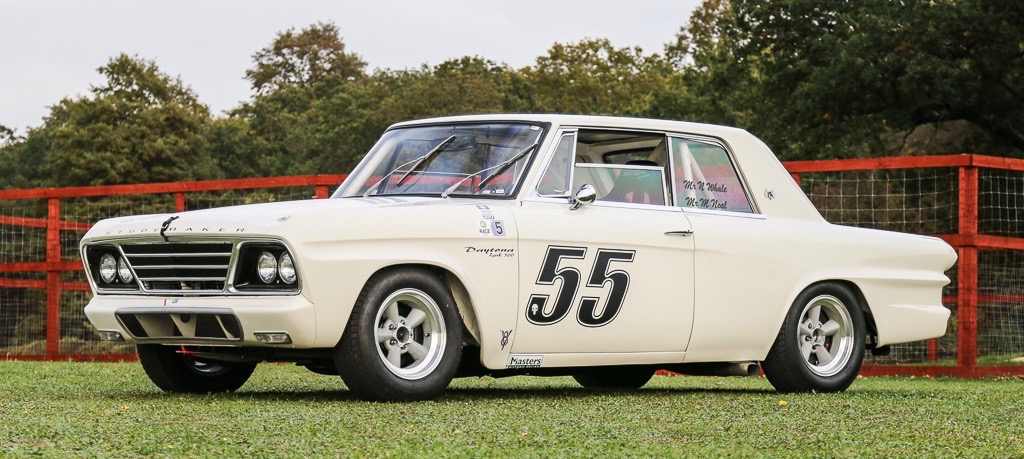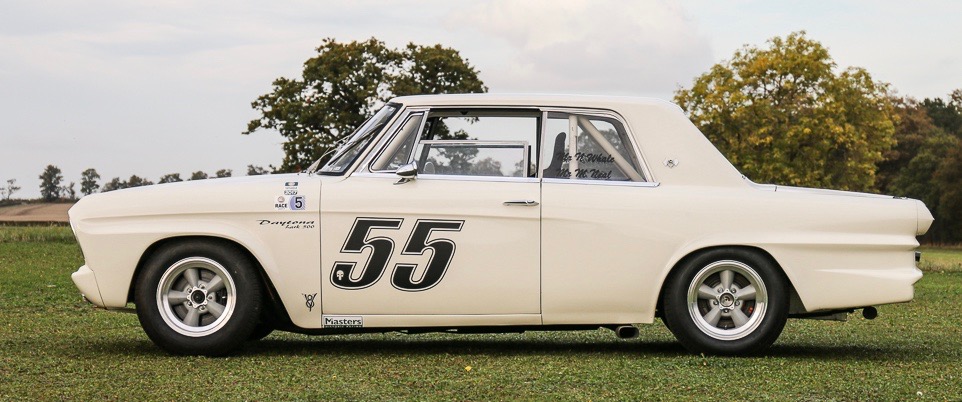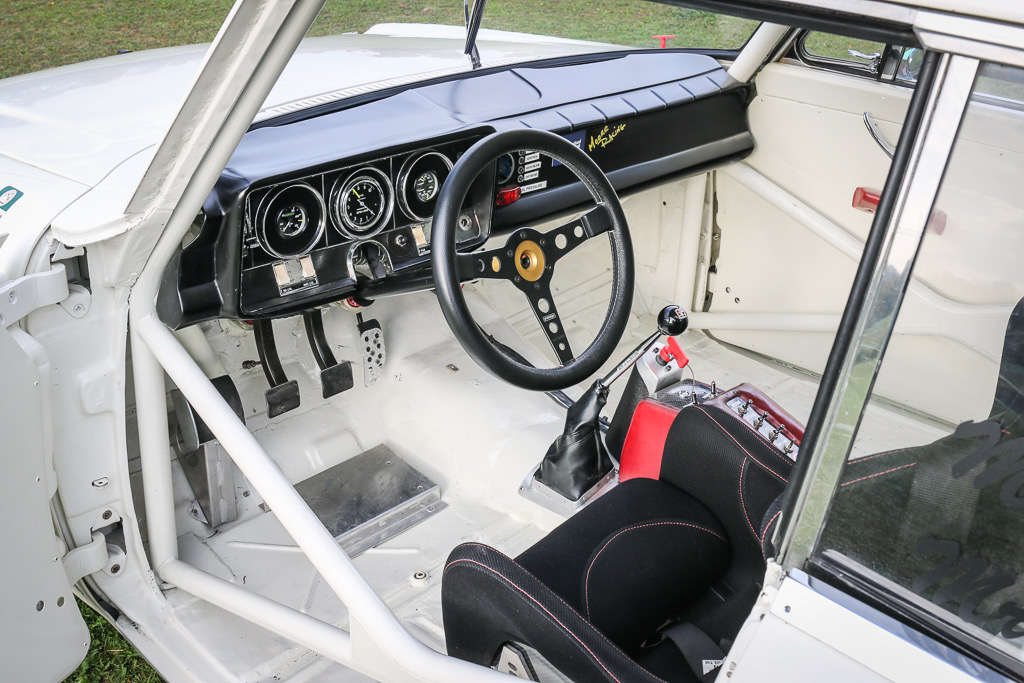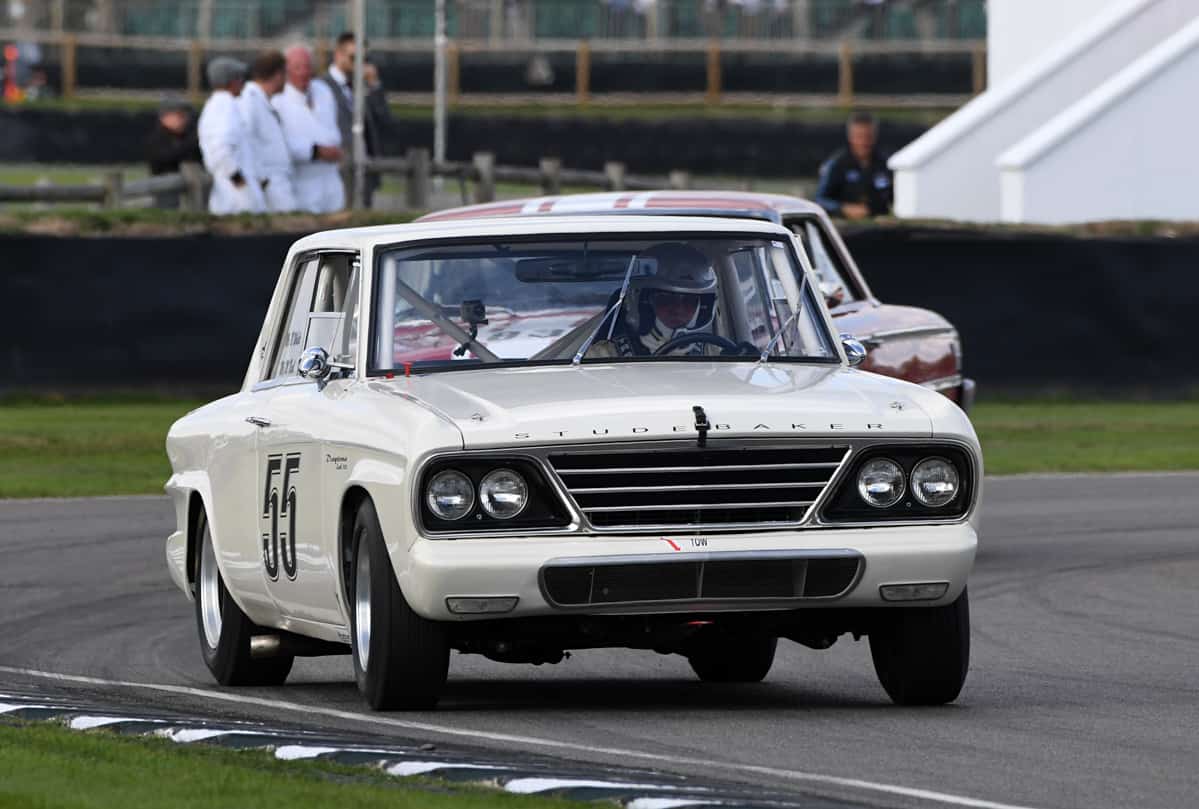The only Studebaker Lark Daytona 500 race car in Europe is going to auction, except it never raced in the Daytona 500, nor did any other Studebaker Lark, although Harold Smith did drive a 7-year-old 1952 Studebaker (earlier than Lark) to a 31st place finish in the inaugural Daytona 500 race in 1959.
Studebaker introduced its compact Lark sedan as a 1959 model. For 1962, it designated the Lark’s top trim package as Daytona, which joined the Taxi, Heavy-Duty, Deluxe and Regal in the Lark lineup.

Lark Daytonas did take part in racing, but as the pace car. And not at Daytona but at Indianapolis, where it was a late substitute for the Studebaker Avanti that wasn’t ready for duty yet in May 1962.
So while the car going to auction didn’t race at Indy or Daytona, it still has racing pedigree. According to Silverstone Auctions, four Studebaker Lark Daytonas were modified for motorsports and carried Daytona 500 designation. One of them, converted by Fortec Motorsports, has participated in vintage racing in England with Richard Moore Racing and will be offered for sale at Silverstone’s inaugural Autosport International Sale, January 12 at the NEC in Birmingham, England.
Silverstone says that of the four Daytona 500 Larks, this is the only one in Europe. The auction house expects it to sell for at least £100,000 ($127,300).
“This car is not only exceptionally rare, it is a highly developed and extremely competitive car that is both beautifully prepared and expertly engineered,” said Lionel Abbott, a classic car specialist with Silverstone Auctions.
“It’s one of the finest race cars in the auction and is sure to attract the eye of the many show goers at the fantastic Autosport International show.”


The car has left-hand drive, a “freshly prepared Chevrolet V8” rated at 430 horsepower, and has been vintage racing for more than a decade. It has raced five times at Goodwood.
“This car is a ticket to compete at some of the most high profile historic races in the world,” Lionel added. “It is eligible for the 2019 Masters series as well as the 2019 HRDC Historic Touring Cars, Bernie’s V8’s and HSCC Touring Cars.”
The car comes a long list of spare parts, including a dozen wheels and tires, two limited-slip differentials, and extra body panels.






Larry, your articles are usually well-researched and accurate, and I enjoy reading them.
However, before you further spread the nonsense about the Studebaker Lark substituting for the Avanti to pace the 1962 Indianapolis 500, please read my article from the December 2017 Hemmings Classic Car:
https://www.hemmings.com/magazine/hcc/2017/12/Pace-Car-Myth-Busters/3751330.html
Best. Bob Palma
Thanks, Bob. My best Indy 500 pace car reference book is still packed in a box in a storage unit as I move into my new home.
Thanks for the comeback, Larry.
One prominent Indianapolis 500 Pace Car book (I think it’s the one that says the Pace Cars had the 210 HP engine, rather than the 225, which they DID have) also says the 1962 Lark Pace Cars were the first unibody pace cars, which is also ridiculous in that all Studebaker Larks and Avantis were of conventional body-on-frame construction.
If you can find a copy, the January 1993 issue of Turning Wheels, The Studebaker Drivers Club’s monthly magazine, contains a voluminous article about 1962 Lark Daytona Pace Cars and the associated 500 Festival Cars. I didn’t write the article, but had a hand in the tedious, one-by-one Production Order research necessary for the writer, my cousin George Krem, to do so.
Best. BP
The Studebaker that Harold Smith raced in the first Daytona 500 was a 1959 Studebaker Lark. There are several photos that verify this fact.
Love the styling of these final Studebaker Daytona’s, so much so that I bought one. But I find it interesting that this car is campaigned as a ‘65, (including running what ‘65’s were powered by: a Chevrolet V8) but it appears to be a ‘64. Unless I’m not seeing the pictures correctly, it looks to be a “Hardtop” version, (no “B” pillar), but that body style was discontinued after the ‘64 model year. The only 2-doors available in ‘65 were Coupes… and ‘64 Hardtops were all Studebaker powered— no Chevrolet engines were used in those cars. Do the rules care about this? I don’t know, just asking.